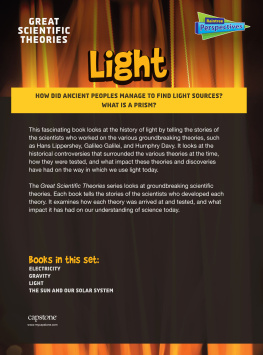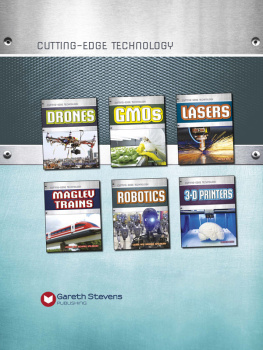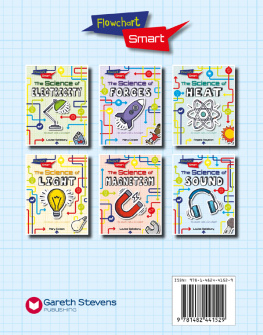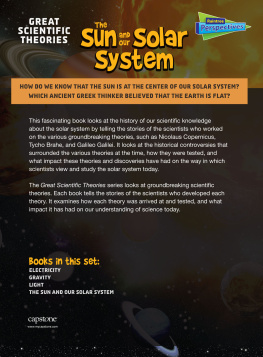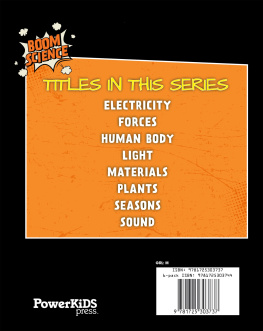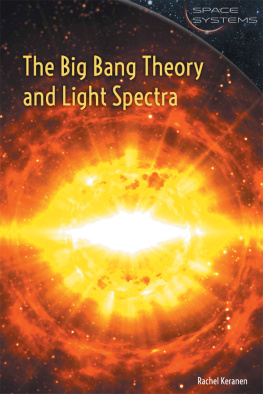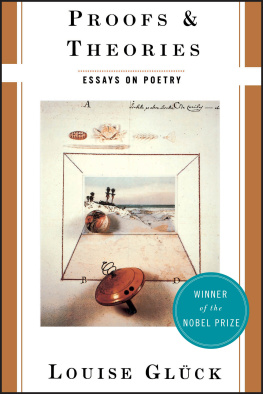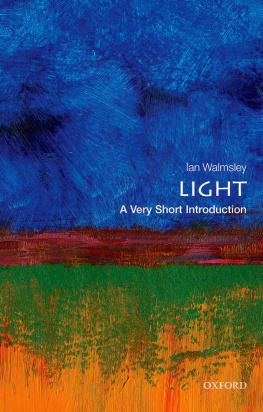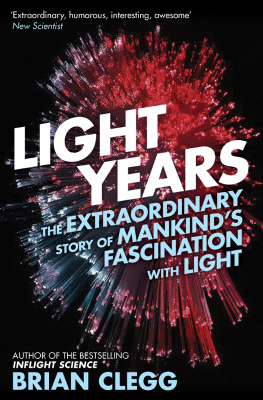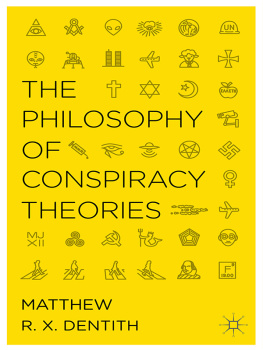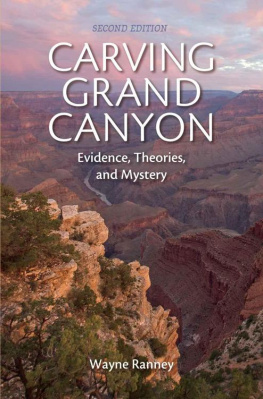TESTING THEORIES
For hundreds of years, .
The invention of the sundial shows that people used the position of shadows to find the time of day. The first one was invented by the Egyptians in around 800 bc .
Right or Wrong?
Scientists test ideas to see if they are right or wrong. They put together facts produced by these tests to help prove their ideas. Scientists test new ideas all the time, but their ideas are built on the theories of scientists who came before them. Some of historys greatest scientists completely changed the way people thought about the world.
Studying Light
Imagine a world without light. Light is vital for most living things: plants use light to make food, and animals need light to hunt or to see approaching dangers. We need light to read, work, travel, and play. People have always known that light and dark have a huge impact on our lives. However, it took many years to discover where light came from, what it is, and how it behaves. Many thinkers and scientists have studied light throughout history.
Crops, such as corn, use sunlight to turn air and water into food. They use the food to grow and develop.
THE NATURE OF LIGHT
Today, it is common knowledge that light is a kind of energy, such as heat and electricity. Energy is the ability to do work. But our understanding of the nature of light energy has changed greatly through history.
Light from Eyes
The ancient Greeks believed everything was made up of different mixes of four elements: earth, air, fire, and water. Empedocles (495430 bc ) had a theory about how people see that was based on the four elements. He said that the goddess Aphrodite lit fire in human eyes. People saw when this fire, or light, shone from their eyes. There was a problem with this theory, though. People could not see things well at night. Empedocles and his followers said this happened because fire from the eyes was canceled out by different fire from other objects.
Ancient Greek thinkers believed that eyes produce light to see things.
Light Ideas
Empedocles had other ideas about light. For example, he believed light travels with a fixed speed and in straight lines. Scientists today agree with this idea. However, Empedocles also believed that humans see different colors due to an scientists wouldnt agree with this theory!
Empedocles
Observing Nature
The Greeks learned a lot about light from nature. For example, one reason they thought light came from the eyes was because cats eyes shine at night. We now know this is caused by light reflecting from inside their eyes.
Light from the Sun
Not all ancient thinkers agreed with Empedocles. In 55 bc , Lucretius (9955 bc ) had an idea that sunlight is pushed out from the sun. No proof of this theory was found until about 1,000 years later.
Dark Room
The Iraqi scientist Al-Hasan Ibn al-Haytham ( ad 9651039) agreed with Lucretius idea. He also said that we see because light enters our eyes from light sources, such as the sun or anything that light reflects from. He proved this by inventing the camera obscura.
People marvel at the images in a camera obscura today, just as they did in al-Haythams time.
Camera obscura means dark chamber, or room. The room had a pinhole in a window shutter. Al-Haytham demonstrated how an eclipse of the sun could be seen on the wall inside, opposite the hole. As the eclipse was happening outside, he proved light from the sun had come inside through the hole and into the darkened room.
Reversed Image
The image was reversed. Al-Haytham realized that light rays from the image crossed as they passed through the hole. The image was bigger if the wall was further from the hole. This is because longer distances allow rays to widen before hitting the wall.
AL-HASAN IBN AL-HAYTHAM
Al-Hasan Ibn al-Haytham was from an area now known as Iraq. After getting in trouble with an Egyptian ruler he was working for, al-Haytham pretended to be crazy so that he was locked in his house instead of being killed. During this time, al-Haytham studied and wrote books about how we see and about light, rainbows, stars, and eclipses.
BENDING LIGHT
Since ancient times, people have wanted to see small things and distant things better than they can with their own eyes. People now know that lenses can do the job by bending light.
Refraction
refraction in different shapes of glass. Pieces of glass that were thicker in the middle than the edges made objects appear bigger. This shape of glass was given the name lens from the popular Roman food of the same shape: the lentil!
Lenses in eyeglasses were an invention that used refraction. Billions of people around the world use eyeglasses to see better.
Seeing Better with Lenses
In the Middle Ages, the English monk , light from objects onto the back of the eye. He had a theory that some people cannot see things either up-close or far away clearly because their lenses do not focus light properly. Bacon reasoned that different lens shapes could adjust this focus to correct farsightedness and nearsightedness.
Roger Bacon
The First Eyeglasses
The first . They were mounted in a wooden frame held to the eyes by handles.
Magnifying with Glass
Have you ever looked at objects with a magnifying glass? A magnifying glass lens. This tricks our eyes into seeing small things bigger than they really are.
Planet Gazing
By the 1600s, people began to experiment with lenses to help them see distant objects better. In 1608, a Dutch lens eyepiece on a tube with a convex lens inside. Lippershey called his invention a kijker , which means looker in Dutch.

